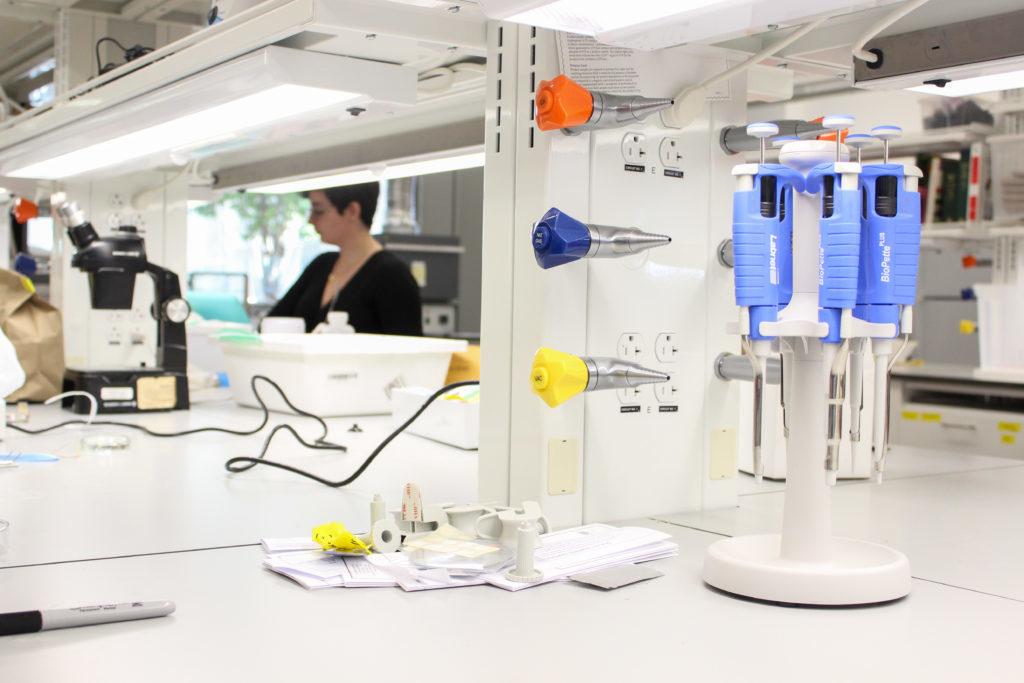Faculty are wary of future cuts to health science and humanities research funding after President Donald Trump released his first federal budget blueprint last Thursday, proposing slashes to or total elimination of some funding sources.
Trump’s proposed budget plan includes steep cuts to agencies that are crucial to research at GW, threatening the University’s goals to improve its standing as a research institution. If passed, the budget would cut funding for the National Institutes of Health by $5.8 billion and completely eradicate the national endowments for the arts and the humanities.
The NIH currently funnels more than $23 million total in research funding into departments like biostatistics, chemistry, engineering, internal medicine, microbiology, pharmacology, public health and medicine.
Leo Chalupa, the vice president for research, said in an email the proposed budget calls for large cuts to GW’s biggest research funding streams, but said it’s too early to know what the final budget will look like once it’s approved.
“It is too early in the process to know how the adopted budget will compare to this proposal and any resulting impacts to GW’s research enterprise,” Chalupa said.
Michael Bukrinsky, a professor of microbiology and the director of the District of Columbia Center for Aids Research Developmental Core, said the NIH is his primary funding source and that his projects collectively receive more than $800,000 dollars from there.
“The NIH is the main funding institution for HIV research,” Bukrinsky said. “So now the question is of course, whether HIV infection is considered important enough to preserve funding.”
Bukrinsky said a portion of his funding comes from smaller agencies, like the American Heart Foundation, that are not affected by the budget. But these grants are generally for preliminary research and data gathering that leads to larger NIH grants, he said.
Bukrinsky added that even a pause in funding can have detrimental effects to research because HIV research is time-sensitive and relies on experiments being done in a strict sequence.
Most federal dollars go to staff salaries and those funding cuts may force some projects to let researchers go. He added that this may have a “snowball” effect on science education because less research will be done, meaning fewer students will be involved.
“When you fire people, you can’t make experiments and then everything sort of comes to a close,” Bukrinsky said. “If young people who come to the lab to learn don’t have anywhere to come we will lose a generation of scientists. Then in the end, who will do research?”
Patti Gravitt, a professor of molecular epidemiology in the Milken Institute School of Public Health, said the cuts could be “devastating” to the diversity of science research. Under the budget blueprint, federal officials would completely defund the Fogarty International Center, a nonprofit branch of the NIH that focuses on global health.
Gravitt said the dissolution of this organization negatively impacts the future of science around the world because the budget gives less money to global research.
“This is an incredibly short-sighted proposal given the connectedness of the global community and the public health threats that must be mitigated at the source,” Gravitt said. “The loss of training opportunities for young scientists who are funded largely through these research grants poses a serious threat to the U.S.’s role as leaders in biomedical research.”
She added that the NIH often funds basic but crucial “blue sky science,” like general health science, which is often less attractive than “hyped” fields, like personalized medicine.
“This cut will be devastating,” she said. “We have already endured a 10-year lull in funding, which severely limits the number of grants funded and thus the diversity of science.”
Arts and humanities research could be similarly devastated if the national endowments for the arts and humanities are eliminated, as suggested in the proposed budget.
Nina Seavey, the director of GW’s Documentary Center, said she has received almost $1 million from the NEH and that although she is not currently working on an NEA-funded project, the endowment completely funded her last film, “Healing Wars.”
The two endowments play a role in increasing project diversity and the cuts could keep films that aren’t produced by major studios from being made, Seavey said.
“The NEA and the NEH become kind of the arbiters of what kind of documentaries are going to be made,” she said. “When you start talking about being able to sort of eliminate that pool of resources, it’s devastating because it means that those films, those issues, those ideas will never get explored.”





